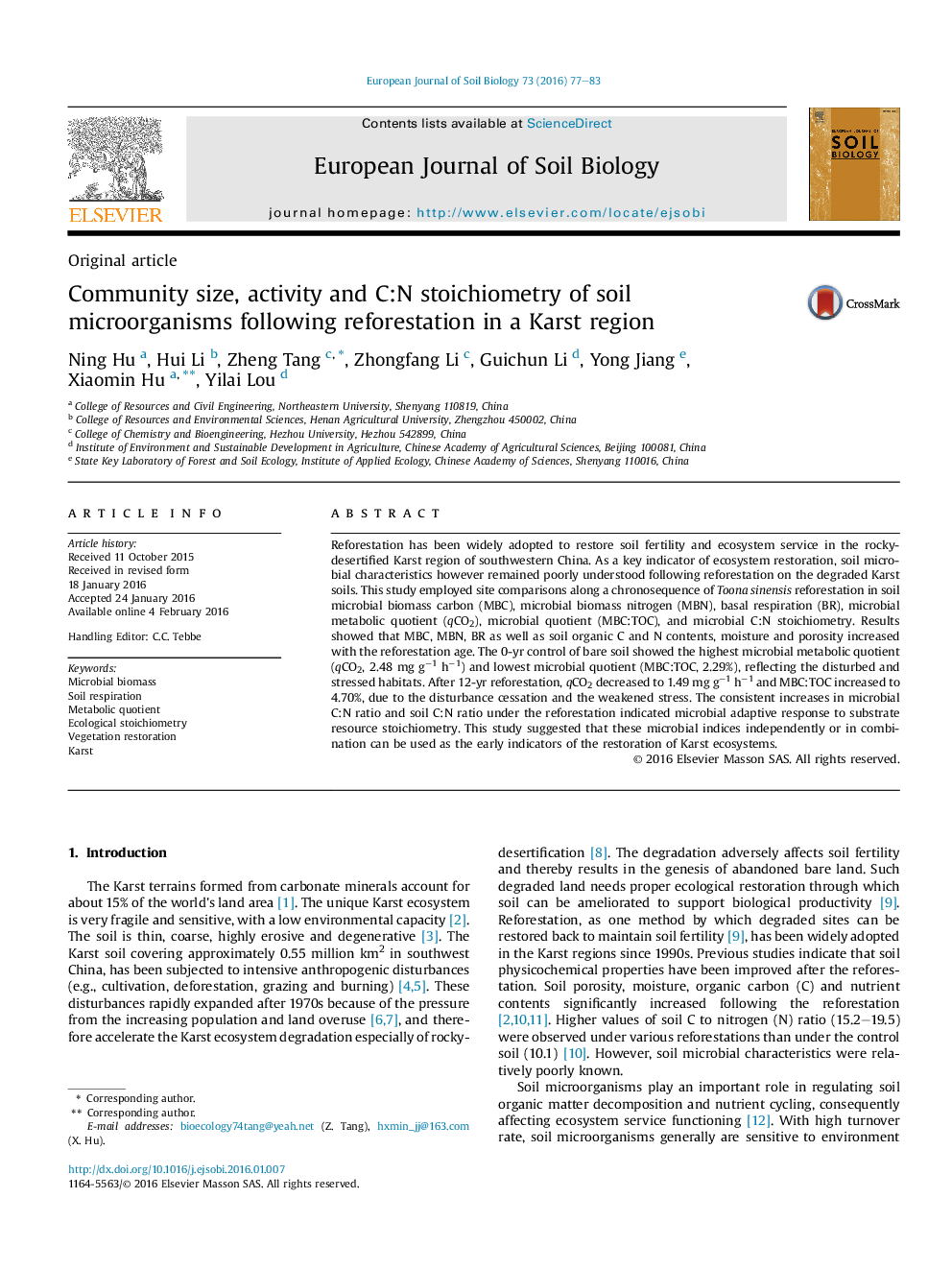| کد مقاله | کد نشریه | سال انتشار | مقاله انگلیسی | نسخه تمام متن |
|---|---|---|---|---|
| 4391721 | 1618119 | 2016 | 7 صفحه PDF | دانلود رایگان |
• Microbial biomass and activity increased with the restoration of soil physicochemical properties.
• The increased microbial quotient and decreased metabolic quotient reflect the restoration of degraded habitats.
• Microbial C:N ratio tended to increase as an adaptive response to resource stoichiometry.
Reforestation has been widely adopted to restore soil fertility and ecosystem service in the rocky-desertified Karst region of southwestern China. As a key indicator of ecosystem restoration, soil microbial characteristics however remained poorly understood following reforestation on the degraded Karst soils. This study employed site comparisons along a chronosequence of Toona sinensis reforestation in soil microbial biomass carbon (MBC), microbial biomass nitrogen (MBN), basal respiration (BR), microbial metabolic quotient (qCO2), microbial quotient (MBC:TOC), and microbial C:N stoichiometry. Results showed that MBC, MBN, BR as well as soil organic C and N contents, moisture and porosity increased with the reforestation age. The 0-yr control of bare soil showed the highest microbial metabolic quotient (qCO2, 2.48 mg g−1 h−1) and lowest microbial quotient (MBC:TOC, 2.29%), reflecting the disturbed and stressed habitats. After 12-yr reforestation, qCO2 decreased to 1.49 mg g−1 h−1 and MBC:TOC increased to 4.70%, due to the disturbance cessation and the weakened stress. The consistent increases in microbial C:N ratio and soil C:N ratio under the reforestation indicated microbial adaptive response to substrate resource stoichiometry. This study suggested that these microbial indices independently or in combination can be used as the early indicators of the restoration of Karst ecosystems.
Journal: European Journal of Soil Biology - Volume 73, March–April 2016, Pages 77–83
